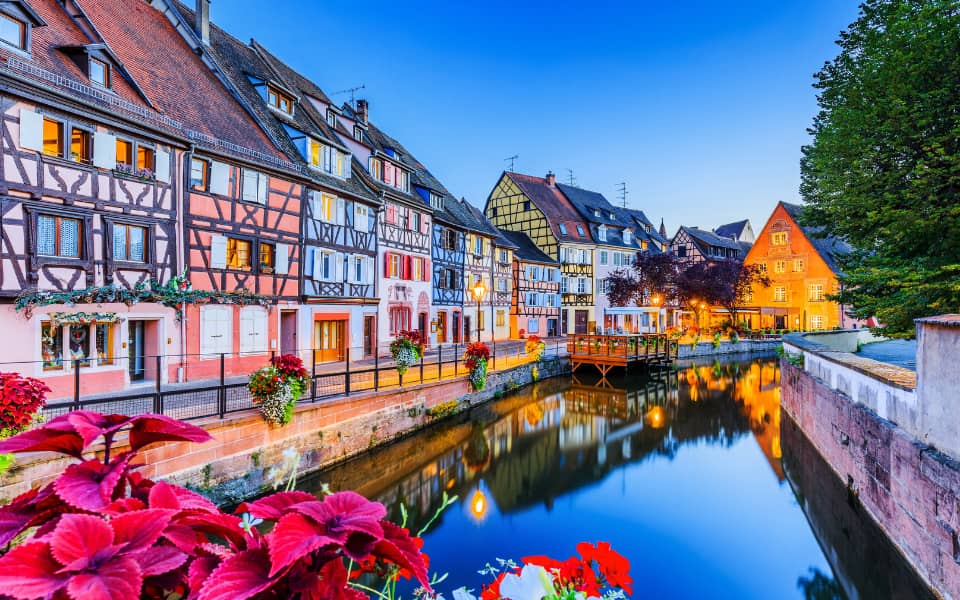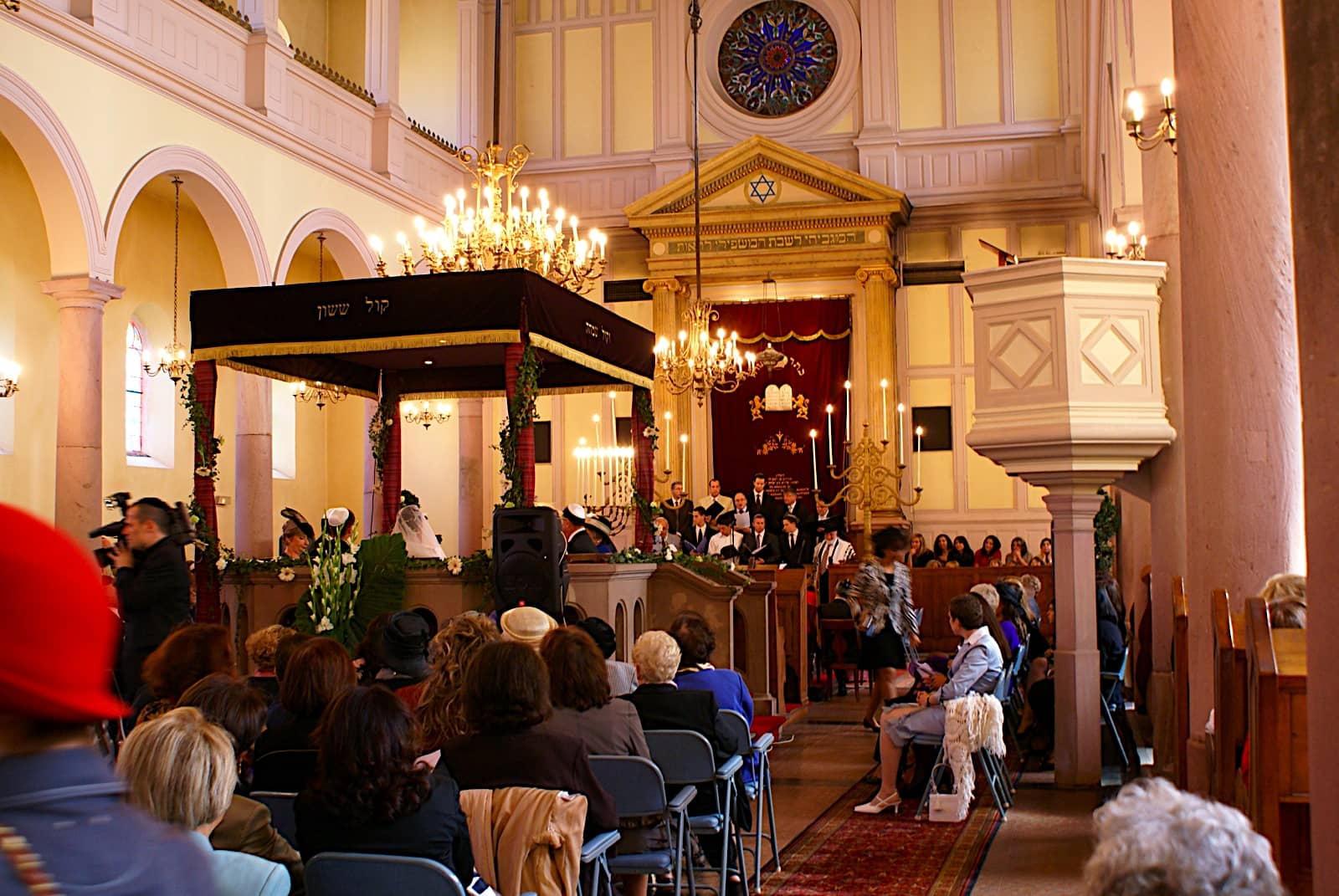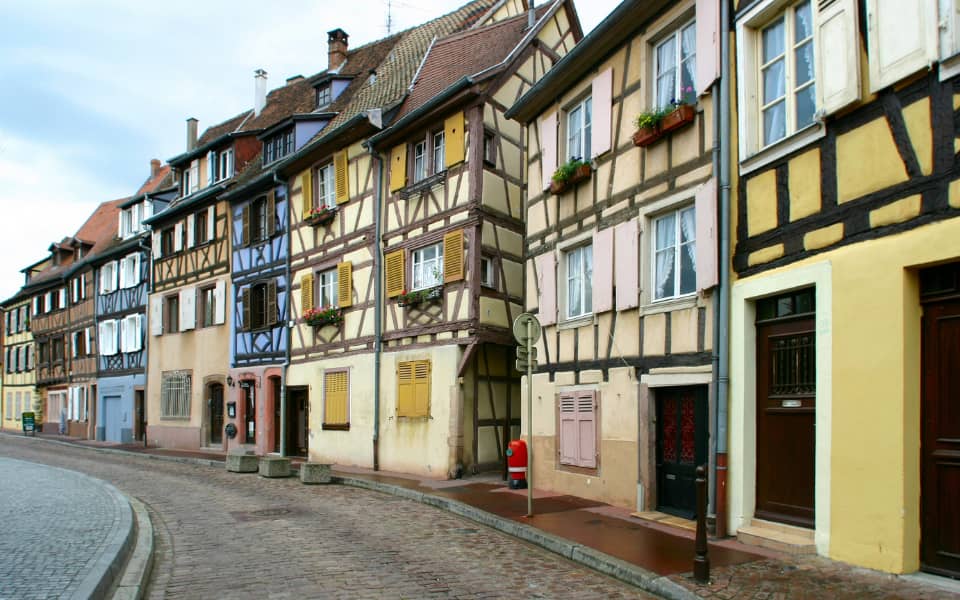Colmar is a town in the Grand Est region of northeastern France, near the border with Germany. Its old town has cobblestone streets lined with half-timbered medieval and early Renaissance buildings. The Gothic 13th-century, Eglise Saint-Martin church stands on central Place de la Cathédrale. The city is on the Alsace Wine Route, and local vineyards specialize in Riesling and Gewürztraminer wines.

It is believed that Jews settled in Colmar around the middle of the 13th century; there is a document from 1278 that mentions the Jews living there. The town’s first Jewish community consisted of a synagogue, a mikveh, a cemetery, and a “dance hall.” The Jewish quarter was situated between the western rampart, the present Rue Chauf-four, and the Rue Berthe Molly (formerly the Rue des Juifs). In 1348, during the Black Death persecutions, the Jews of Colmar were all condemned to death and were burnt at the stake the following year. This event took place at what is known still today as “Judenloch.”

Several years later in 1385, Jews were once again allowed to reside in Colmar. The community consisted of around 29 adults by 1392 but the population started to decrease until 1468 when only two families remained. In 1510, the emperor gave permission to the town to expel the remaining Jews and many moved outside the town to the surrounding areas. They were still able to continue their commercial relations with the burghers of the town, but in 1530 they were forbidden to lend to the burghers. In 1534 they lost the right to trade within Colmar, and in 1541 were forbidden to enter the city even to attend markets and fairs.

This was a result of a decision that Joseph (Joselmann) Gershon of Rosheim made and the result is not well-known. The negative attitude of the burghers toward the Jews remained unchanged, even after Colmar was formally annexed to France in 1681. During the 18th century, there were a few Jews who were authorized in the town in order to prepare ritual food for Jews who visited the town for trade purposes. Finally, after the outbreak of the French Revolution in 1789, Jews were again allowed to settle in Colmar and the Jewish population reached approximately 1,200 in 1929.
During the Holocaust, Jews in Colmar shared the fate of the other Jews in Alsace and Moselle. They were expelled from their homes, and their synagogue, which was built in 1843, was completely ransacked. After the war the survivors rebuilt the Jewish community, restored the synagogue, and set up new institutions, including a community center. In 1969 there were over 1,000 Jews in Colmar.

